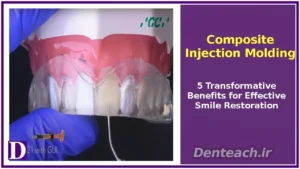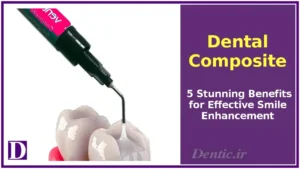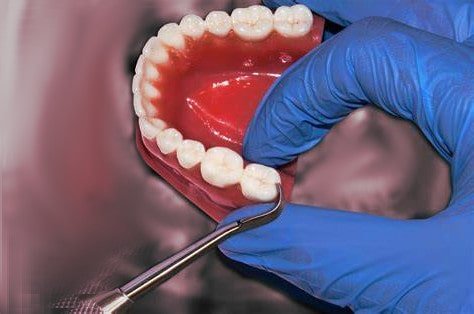
Table of Contents


Composite Injection Molding: 5 Transformative Benefits for Effective Smile Restoration

Dental Composite: 5 Stunning Benefits for Effective Smile Enhancement

Teeth Bleaching: 5 Radiant Benefits for Effective Smile Brightening

Dental Veneer: 5 Stunning Benefits for Effective Smile Enhancement

Implant-Supported Fixed Prostheses: 5 Advanced Benefits for Effective Smile Restoration

Wisdom Teeth: Navigating Their Emergence and Care
Wisdom teeth, also known as third molars, are the last set of molars to erupt, typically between ages 17 and 25, marking a significant milestone in dental development. With over 10 million wisdom teeth extractions performed annually in the U.S., primarily due to impaction, according to the American Association of Oral and Maxillofacial Surgeons (AAOMS), these teeth often present unique challenges. This article explores the definition, significance, challenges, care tips, extraction process, aftercare, and future trends of wisdom teeth, emphasizing their impact on oral health and the importance of proactive management.
Defining Wisdom Teeth
Wisdom teeth are the third set of molars located at the back of the mouth, typically four in number (one in each quadrant). Emerging in late adolescence or early adulthood, they are named for their association with the transition to maturity. In ancestral diets requiring heavy chewing, wisdom teeth aided in processing coarse foods. However, modern diets and smaller jaw sizes often lead to complications, with 90% of people having at least one impacted wisdom tooth, per AAOMS data. These teeth may require monitoring or removal to prevent pain, infection, or misalignment, making informed care essential for oral health.
Significance of Wisdom Teeth
Wisdom teeth hold historical and functional importance:
- Late Bloomers: Their eruption in late teens or early twenties symbolizes a developmental milestone, often linked to acquired maturity or “wisdom.”
- Chewing Aid: In prehistoric humans, wisdom teeth supported chewing tough, unprocessed foods, contributing to dietary survival.
- Modern Challenges: Smaller jaws in modern populations, due to evolutionary changes, result in frequent impaction or misalignment, necessitating intervention in 60–70% of cases.
Challenges Associated with Wisdom Teeth
Wisdom teeth often pose complications due to limited jaw space:
- Impaction: Partial or complete failure to erupt, with teeth trapped in the gum or bone, causing pain or swelling in 10–15% of cases.
- Misalignment: Wisdom teeth may emerge at awkward angles, crowding or damaging adjacent teeth, affecting 20% of orthodontic patients.
- Pain and Discomfort: Eruption can cause inflammation, soreness, or jaw stiffness, impacting daily activities like chewing or speaking.
- Infection and Gum Disease: Partially erupted teeth create pockets where bacteria thrive, leading to pericoronitis (gum infection) or decay in 5–10% of cases.
- Cysts or Tumors: Rare but serious, cysts or benign tumors may form around impacted teeth, requiring surgical removal in 1–2% of cases.
Wisdom Teeth Care Tips
Proactive care minimizes complications:
- Regular Dental Check-Ups: Schedule exams every 6–12 months to monitor wisdom teeth development, especially from age 16, to detect issues early.
- X-Rays: Panoramic or cone-beam CT scans assess tooth position, angulation, and impaction risk, guiding treatment decisions.
- Pain Management: Use over-the-counter pain relievers (e.g., ibuprofen) and cold compresses to reduce swelling during eruption.
- Oral Hygiene: Brush twice daily with fluoride toothpaste, floss carefully around back molars, and use antiseptic mouthwash to prevent infection.
- Prompt Consultation: Seek dental evaluation for persistent pain, swelling, or signs of infection to determine if extraction is needed.
The Extraction Process
When complications arise, extraction is often recommended:
- Assessment: Dentists or oral surgeons use X-rays and clinical exams to evaluate tooth position, root structure, and impaction type (soft tissue or bony).
- Anesthesia: Local anesthesia numbs the area, while conscious sedation or general anesthesia may be used for complex cases or anxious patients, ensuring comfort.
- Extraction: Simple extractions (5–15 minutes) use elevators and forceps for fully erupted teeth. Surgical extractions (20–60 minutes) involve incisions, bone removal, or tooth sectioning for impacted teeth.
- Site Preparation: The socket is cleaned to remove debris or infection, promoting healing.
- Closure: Sutures, often dissolvable, are placed for surgical extractions to aid recovery.
Post-Extraction Care
Effective aftercare ensures optimal healing:
- Pain Management: Use prescribed or over-the-counter pain relievers for 2–3 days, with discomfort typically subsiding within a week.
- Site Care: Rinse with saltwater after 24 hours, avoid vigorous rinsing, and refrain from touching the socket to prevent dry socket (3–5% risk).
- Diet: Consume soft foods (e.g., yogurt, smoothies) for 2–3 days, avoiding hot, spicy, or crunchy items.
- Oral Hygiene: Brush gently, avoid the extraction site initially, and abstain from smoking or straw use to maintain the blood clot.
- Follow-Up: Attend a follow-up visit 7–14 days post-extraction to monitor healing and remove non-dissolvable sutures if needed.
Oral and maxillofacial surgery
Challenges and Considerations
Challenges include:
- Cost: Extractions cost $75–$200 for simple cases and $300–$800 for surgical, with insurance often covering medically necessary procedures.
- Complications: Dry socket, infection, or nerve injury occur in 5–10% of cases, requiring prompt management.
- Recovery Time: Healing takes 1–2 weeks, with surgical extractions potentially requiring longer recovery.
- Anxiety: Dental fear, affecting 20% of patients, may necessitate sedation, increasing costs.
- Replacement Needs: Post-extraction gaps may require implants or bridges to restore function, adding $500–$5,000 in costs.
Future Trends
Wisdom teeth management is evolving:
- Minimally Invasive Techniques: Laser-assisted extractions reduce trauma and accelerate healing.
- Advanced Imaging: 3D cone-beam CT improves surgical planning, reducing complications by 15%.
- Regenerative Therapies: Platelet-rich plasma enhances socket healing, potentially shortening recovery by 20%.
- Preventive Monitoring: AI-driven diagnostics predict impaction risk earlier, guiding proactive care.
Conclusion
Wisdom teeth, while a natural part of dental development, often require careful monitoring and intervention due to impaction, misalignment, or infection risks. Through regular check-ups, diligent hygiene, and timely extractions when needed, patients can manage these challenges effectively. With advancements like laser techniques and regenerative therapies, wisdom teeth care is becoming more precise and patient-friendly. For personalized guidance, consult a certified dentist or oral surgeon or visit American Association of Oral and Maxillofacial Surgeons to ensure optimal oral health.
- American Association of Oral and Maxillofacial Surgeons. (2025). Wisdom Teeth.
- American Dental Association. (2025). Wisdom Teeth.
- Dodson, T. B., et al. (2017). Management of third molar complications. Journal of Oral and Maxillofacial Surgery, 75(8), 1603–1612.
- American Association of Oral and Maxillofacial Surgeons. (2025). Patient Education.
